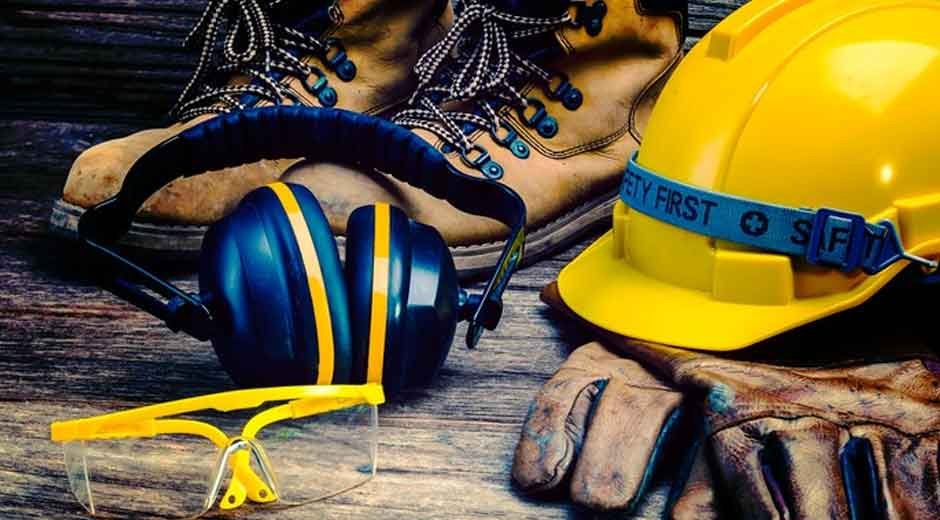Every day, millions of workers face risks that could lead to serious injuries. In 2023, private industry employers reported around 2.6 million nonfatal workplace injuries and illnesses. Many of these could have been prevented with proper safety measures, starting with Personal Protective Equipment (PPE).
But PPE isn’t just about wearing gloves or helmets. It’s about knowing what to use, when to use it, and why it matters. That’s where OSHA 10 training comes in. It teaches workers how to identify hazards, choose the right protective gear, and stay safe on the job. So, let us explore how OSHA 10 training makes workplace safety simple and effective.
What Is OSHA 10 Training?
OSHA 10 training is a 10-hour safety course provided by the Occupational Safety and Health Administration (OSHA). It is designed for workers in different industries, like healthcare. The training covers workplace hazards, workers’ rights and safety practices. One key topic in the course is Personal Protective Equipment (PPE). Thus, completing OSHA 10 training helps workers stay safe and reduce workplace injuries.
Understanding Personal Protective Equipment (PPE)
PPE is any equipment worn to protect workers from workplace hazards. Each type of PPE is used based on workplace risks. OSHA 10 training teaches workers how to choose the right PPE for their job. It includes the following:
- Head Protection: Helmets or hard hats protect against falling objects.
- Eye and Face Protection: Safety glasses, goggles, and face shields protect from dust, chemicals, and infections.
- Hearing Protection: Earplugs or earmuffs reduce exposure to loud noises.
- Respiratory Protection: Masks and respirators filter harmful particles from the air.
- Hand Protection: Gloves protect against chemicals, cuts, and infections.
- Foot Protection: Safety shoes or boots protect from heavy objects and sharp materials.
- Body Protection: Gowns, aprons, or coveralls prevent exposure to hazardous substances.
How OSHA 10 Training Helps in Understanding PPE
The training helps workers identify risks and choose the right PPE for protection. It also teaches how to use, maintain, and dispose of PPE properly. Here’s how OSHA 10 training helps in understanding PPE:
1. Identifying Workplace Hazards
OSHA 10 training helps workers recognize different workplace hazards. These include physical, chemical, biological, and ergonomic hazards.
Understanding these risks allows workers to select proper PPE. For example, healthcare workers learn about infection risks and how gloves and masks protect them.
2. Choosing the Right PPE
Not all PPE is the same. Different jobs require different protective gear. OSHA 10 training teaches workers how to select PPE based on their tasks.
For example, construction workers need hard hats, while lab workers need protective eyewear. This training helps workers make informed choices.
3. Proper Use of PPE
Wearing PPE incorrectly reduces its effectiveness. OSHA 10 training provides step-by-step guidance on how to wear, adjust, and remove PPE.
For example, respirators must fit properly to provide protection. Gloves must be changed after handling hazardous materials. The training ensures workers use PPE correctly to stay safe.
4. Maintaining and Storing PPE
Damaged PPE does not offer full protection. OSHA 10 training teaches workers how to inspect, clean, and store PPE.
For example, safety goggles must be cleaned after each use. Gloves must be checked for holes before wearing. Proper maintenance ensures PPE functions as intended.
5. Understanding PPE Regulations
OSHA has strict regulations for PPE use in different industries. OSHA 10 training explains these rules and why they are important. It teaches workers about employer responsibilities, such as providing PPE and training on its use.
6. Learning About PPE Limitations
PPE does not eliminate risks but reduces exposure to hazards. OSHA 10 training teaches workers about PPE limitations.
For example, gloves protect hands but do not prevent all injuries. Masks reduce airborne risks but do not eliminate them. Workers learn to use PPE along with other safety measures for full protection.
7. Proper Disposal of PPE
Used PPE can be contaminated and dangerous. OSHA 10 training covers proper disposal methods. Healthcare workers learn how to discard gloves, masks, and gowns safely.
This prevents contamination and protects others. Moreover, safe disposal is crucial in maintaining a hazard-free workplace.
Employer Responsibilities and Benefits of OSHA 10 Training
Workplace safety starts with the right knowledge and proper protective gear. Personal Protective Equipment (PPE) shields workers from injuries, infections and any type of hazardous substances. But wearing PPE is not enough, it must be used correctly. OSHA 10 training educates workers on employer responsibilities and the benefits of proper PPE use:
- Employers must provide the right PPE for workers.
- They must train workers on how to use PPE correctly.
- PPE should always be in good condition and replaced if damaged.
- Employers must follow OSHA regulations on PPE use.
Use PPE Correctly with an OSHA 10 Training!
OSHA 10 training plays a vital role in workplace safety. The training helps workers understand Personal Protective Equipment (PPE) and how to use it correctly. The training teaches how to identify hazards, choose the right PPE and follow safety regulations. Additionally, it also covers PPE maintenance and disposal. Completing OSHA 10 training helps workers become more aware of safety risks and better equipped to protect themselves and others. Thus, PPE is a key part of workplace safety, and understanding it properly can save lives.










